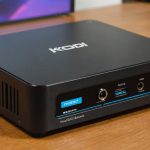Hardware Upgrades for Intel NUC
Upgrading your Intel NUC can significantly enhance its performance, especially for 4K streaming enhancement. Selecting the right components is crucial. Here’s what you need to consider:
Recommended Hardware Specifications
For optimal 4K streaming, focus on upgrading the GPU and RAM. A powerful GPU ensures smooth playback and efficient processing of high-resolution content. Many NUC models benefit from Intel Iris Plus or discrete graphics. RAM also plays a pivotal role; for seamless 4K streaming, aim for at least 16GB of RAM. This memory capacity ensures the system can handle multitasking without lag.
Additional reading : Mastering multi-bay thunderbolt 3 raid: top strategies for streamlined high-quality video editing
GPU and RAM Upgrades
When considering hardware upgrades, the GPU is vital for video processing and rendering. NUC models that support GPU upgrades provide flexibility. Checking your model’s compatibility and using the highest supported GPU can dramatically improve streaming capabilities. As for RAM, upgrading to dual-channel configurations enhances throughput, contributing to better overall performance.
Storage Solutions
Storage is another key factor. For those using Kodi or storing large media files, SSDs offer fast read/write speeds crucial for quick access to media. Opt for high-capacity SSDs to accommodate your media library, ensuring smooth playback without buffering. This storage upgrade secures ample space and speed for storing and accessing media content efficiently.
Also to discover : Essential tips for building a secure and efficient home automation system using your google nest hub
Software Configuration for Kodi
Setting up Kodi on an Intel NUC involves a few pivotal steps to ensure a smooth and efficient user experience, especially for 4K streaming. Begin by downloading the Kodi application from a reliable source on your Intel NUC. Follow the on-screen instructions, ensuring you grant necessary permissions during the installation process. Once installed, open the software to access the settings menu.
Optimal Settings for 4K Playback
To enable seamless 4K playback, you’ll want to optimise a few settings. Navigate to the ‘System’ settings within Kodi. Ensure that the display resolution matches your output device, ideally set to 3840×2160 for 4K streaming. Update the refresh rate to either 50Hz or 60Hz to prevent juddering. Adjust the audio settings to your output device to ensure surround sound formats are supported, offering an immersive viewing experience.
Enhancing Performance with Add-ons
Kodi’s performance can be significantly improved with certain add-ons and plugins. Begin with a reliable video player add-on to ensure the best possible format compatibility. Consider installing a plugin to manage your media library efficiently, such as a metadata scraper, which organises and enhances your media files, rendering a pristine Kodi setup.
Networking Setup for Smooth Streaming
Ensuring seamless 4K streaming requires careful attention to your network configurations. A stable internet connection underpins the entire streaming experience. Without it, even the best devices falter.
Both wired and wireless connections offer unique benefits and drawbacks. Wired connections are typically more reliable, delivering consistent speeds and minimal interference—the ideal choice for high-quality streaming. In contrast, wireless connections provide flexibility, allowing devices to move freely within the Wi-Fi range. However, they are more susceptible to obstacles and interference, which can affect streaming performance.
To optimize Wi-Fi connections, consider these factors:
- Router Placement: Ensure your router is centrally located, away from thick walls or appliances that may disrupt signals.
- Channel Selection: Use less crowded channels to improve efficiency and reduce interference.
- Frequency Bands: Utilise the 5 GHz band for higher data rates and minimal congestion, though it has a shorter range compared to the 2.4 GHz band.
Configuring your router settings is essential to enhance streaming performance. Enable Quality of Service (QoS) settings to prioritize bandwidth for streaming services. Regularly update your firmware to benefit from security improvements and feature enhancements. Such Wi-Fi optimization measures ensure a smooth and enjoyable 4K streaming experience.
Troubleshooting Common Issues
Encountering playback issues can be frustrating, especially when using Kodi on Intel NUC. A common problem is stuttering or buffering during streaming. To enhance buffering and streaming speed, ensure your network connection is stable. Consider switching to a wired connection if you’re using Wi-Fi, as it often provides a stronger, more reliable signal.
If you face performance problems, your device may not be optimised. Adjust Kodi settings by enabling hardware acceleration, which can significantly improve playback performance. Navigate to Settings > Player > Videos and enable the “Allow hardware acceleration – DXVA2” option on Windows, or “Use hardware acceleration – AMCodec” on ARM processors.
When Kodi fails to launch or crashes, troubleshooting Kodi starts with checking for software updates. Updates often include bug fixes that resolve stability issues. If crashing persists, try clearing the cache. On the main Kodi screen, go to Settings > Interface > Skin and select “Clear Cache.”
Finally, if your Kodi on Intel NUC encounters persistent problems, consider reinstalling the software. This can reset configurations to default and potentially fix deeper issues. Always backup your settings before taking such actions to avoid data loss.
Comparisons of Intel NUC Models
When exploring Intel NUC models, it’s crucial to dive into the specifications of popular choices, especially if 4K streaming is a priority. The performance comparison primarily revolves around processing power, graphics capability, and connectivity options.
Specifications Overview
Notable Intel NUC models such as the NUC11PAQi7 and NUC10i5FNK differ significantly in terms of CPU and GPU performance. The NUC11PAQi7, equipped with an 11th Gen Intel Core i7 processor and Iris Xe Graphics, is tailored for high-performance tasks, making it ideal for 4K streaming. In contrast, the NUC10i5FNK, with its 10th Gen Intel Core i5 and UHD Graphics, might suit users with moderate streaming needs and a tighter budget.
Performance Benchmarks
Performance benchmarks show the disparity in 4K streaming capabilities. The NUC11PAQi7 exhibits smoother playback and better multitasking ability than the NUC10i5FNK, primarily because of its superior integrated graphics and support for higher bandwidth memory. Optimal 4K streaming requires a robust model to handle demanding media decoding.
Recommendations
For budget-conscious users seeking reliable 4K performance, it is advisable to invest in models like the NUC11PAQi7, which offers a balanced solution of power and efficiency. Always consider whether the additional features offered by higher-end models justify the cost based on individual needs.
Enhancing User Experience
To truly elevate your Kodi user experience, consider customizing the interface to suit your preferences. Tailoring the look and feel of Kodi can enhance usability and make navigation smoother. Start by exploring the customization options available in Kodi’s settings. You can alter themes, change menu layouts, and even select different skins to fit your viewing setup.
When it comes to organising your media, a neat and well-structured library can be a game-changer. Kodi supports various media libraries, allowing you to categorize your content. This makes finding and enjoying your favourite movies or TV shows a breeze. Consider using tags or creating separate sections for different genres, making it easier to browse through your collection.
Integrating external devices can also significantly improve your viewing setup. Think about connecting a high-quality sound system or a superior display to enhance audio and visual quality. Additionally, using remote control apps on mobile devices can offer a seamless way to navigate through your media without the need for physical remotes.
By leveraging these tips and tools, you can transform Kodi into a personalized entertainment hub that perfectly matches your needs and preferences.






